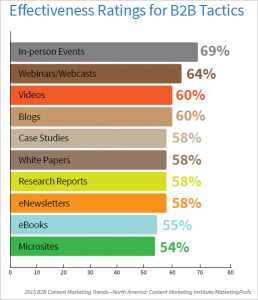
With a global pandemic occupying everyone’s minds, moving ahead with a big product release might seem questionable or unnecessarily daunting. This isn’t to say, however, that organizations should be at a standstill and new offerings shouldn’t be unveiled. Many companies entered the year with a plan for releasing new products or services and can stick to them in many cases.
Effectively executing these launches, however, may look much different during the disruption than when previously mapped out. As with adjusting marketing plans for an uncertain future, organizations should assess and adjust on-the-horizon product launches to best match the new and present reality. For direction in this assessment, use the outlined questions below.
1. Does anyone really want or need this product right now?
Before beginning to really strategize or rethink your launch, assess the currency of market research to objectively weigh the demand or need for the offering. This doesn’t have to be a derailing or unnecessarily time-consuming process. As discussed in Determining Market Demand for New Products or Services, market research can begin with primary and secondary sources. Primary research means going directly to your would-be prospects, others who operate in a different niche within the same market, and, perhaps most importantly, to current customers. Secondary data may come from information services companies or self-compiled research from an array of available sources.
Before reaching out to contacts, have a solidified and standard set of questions that will objectively gauge their interest in the offering and how the current climate is impacting it. Where possible, keep questions simple and direct (e.g. scale-based or multiple-choice responses) but do mix in open-ended questions that will provide qualitative context.
2. Does the offering require adjustments to meet buyer needs and expectations?
Effective current research will also help to show where your buyers may have shifted from previously established buyer personas. This will inform where the launch will need to pivot as well, in small ways or potentially big ones. Considering the economic impacts of the crisis, one of the key pain points to consider is the pricing of your new product or service.
If pricing is an apparent issue, evaluate how your product or offer terms could possibly be adjusted to meet where prospects are from a budget perspective. Companies that may be more hesitant about upgrading or adopting a new product or service may need to see the ways in which your offering can potentially cut down or alleviate spending concerns. Be sure to emphasize any ways in which your product or service may reduce spending, whether that’s by giving organizations more time to focus on other things, or your product may add a particular value that will only make their company stronger and more profitable.
3. Can a launch be effectively communicated with digital marketing?
Thinking outside of the digital box should apply to a B2B launch strategy. Create buzz and share essential information about the launch in the digital space that most are occupying right now. Teams may have planned to host an in-person launch event or exhibit in booths at trade shows. While it may be a slightly different approach and setup, launch events can be moved online by utilizing tools like Zoom or other top video conferencing platforms. Marketing materials that may have been started or already created for your in-person events, such as banners and flyers, can still be used as the creative for your online events, such as attachments in your email marketing efforts or added as your social media platform banners and as the background for your virtually hosted event.
And of course, be sure that the tone of this digital communication is thoughtful and compassionate. Businesses such as VSCO and Digiday have managed to launch new products and release new branding amid this crisis in a way that was sensitive to the current needs and pain points of their audience. VSCO put the crisis at the forefront of their messaging instead of shying away from it and included a small but honest way that they hope their current product will make a positive impact on people’s lives right now.
Staying on Brand While Adjusting
While these questions can open up discussion amongst your team around important factors to consider for your B2B product or service launch, it’s important to lean on the guiding principles and core values that have guided your company into 2020 and will still be there at the end of the year. Much like all other aspects of your marketing and business strategies during this time, adjust your launch with a critical and thoughtful perspective, grounded in research, so that your business can shift in the new direction that’s taking shape.
Business & Finance Articles on Business 2 Community
(61)









